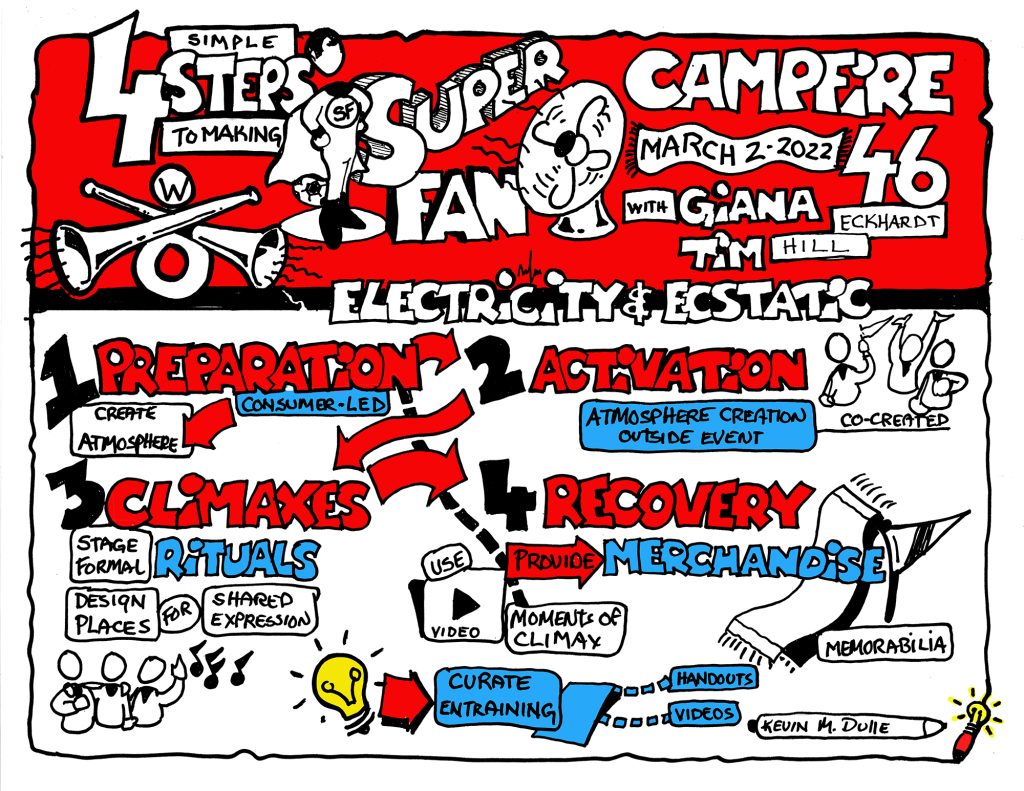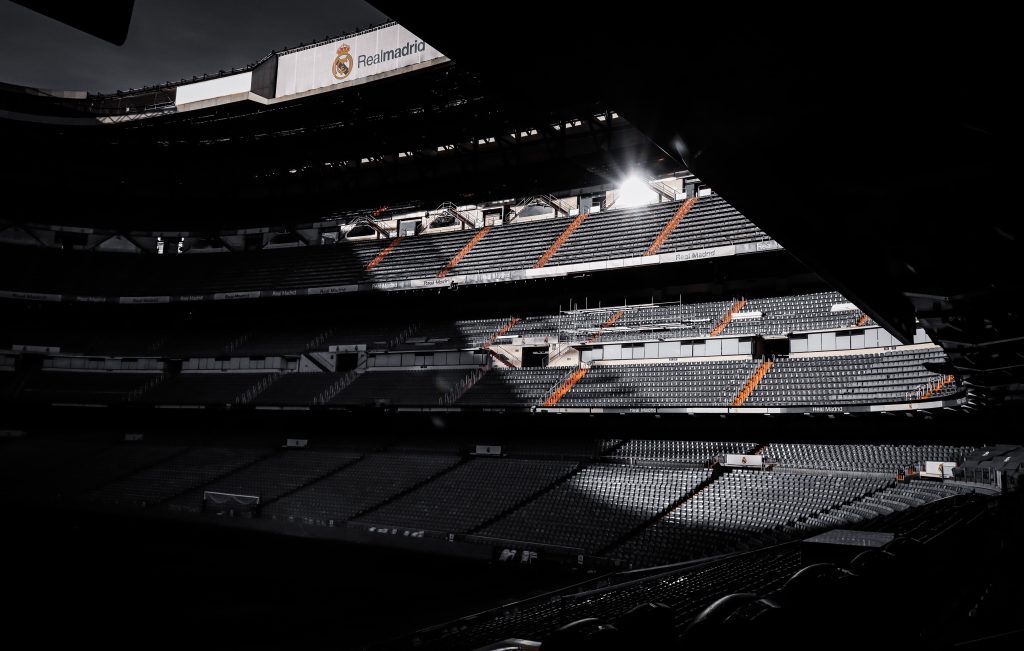Ever felt the hairs prickle on the back of your neck when you enter a sports match and see/hear/FEEL the crowd open up before you?
How about lost yourself in a collective groundswell of symphony and song? Or the literal swell of a Mexican wave?
Maybe sport leaves you unmoved – but you’ve felt the same electricity right before the beat drops in the club, or the headliners take to the festival stage, or the red curtain rises above the theatre audience.
Anyone who has ever experienced a mass outpouring of emotion in a packed stadium or music venue knows how it can lift us into a state of elation. That’s because live events contain a certain kind of magic.
Now, a team of academics has broken down the science behind the spectacle to create The 4-Step Plan To Transform Spectators Into Superfans.

Giana Eckhardt, Professor of Marketing at King’s College London, together with colleagues Tim Hill from the University of Bath and Robin Canniford from the University of Melbourne, closely studied the elements that create the unique atmosphere at Liverpool Football Club’s home ground, Anfield.
Whether you know your Harry Kane from your Harry Redknapp or would rather sit in traffic than a stadium, their findings offer a simple, stunning four-point plan for generating atmosphere before, during and after an experience.
And in a time when we’re still convincing people to get off the couch and return to IRL events, who couldn’t use a little of that magic?
Our Campfire donned their best sport strips, band t-shirts and fan merch, before joining together in a rousing rendition of Liverpool FC’s anthem, You’ll Never Walk Alone to welcome Eckhardt and Hill to explain their findings. Here’s what we learned.
We Know Emotion Is Important. But Where Does It Come From?
Whether you’re in a café, a stadium or a cathedral, atmosphere is crucial to creating a connection between us and the place we’re in.
“Atmospheres are an emotional quality of events and places.”
Giana Eckhardt
This emotional connection brings many benefits, including:
- Loyalty and return visits
- Place attachments
- Binding people together
Think of Mardi Gras. Participants feel part of something larger than themselves and return year after year to be part of its unique atmosphere.
However, researchers have little to say on how events can become electric or ecstatic.
To answer this question, Eckhardt, Hill and their team conducted ethnographic research on Anfield Stadium, the home of Liverpool Football Club (LFC), which is known for the strength of its fans.
Over a period of two years, they studied not only the matches themselves, but also the pre- and post-rituals surrounding them. They also spoke not only to fans, but also to stadium designers, crowd safety consultants, police, marketing consultants, and other stakeholders with varying levels of loyalty and ties to the club.
Atmosphere Is Built Up In The Ritual Chain

Their research resulted in a brilliantly simple insight: a “ritual chain” that generates atmosphere when all four stages are followed:
- Preparation: the process of creating atmosphere begins at home as users psych themselves up for the event.
- Activation: users move in larger groups to places that form a service ecosystem – for examples bars, pubs or outside the venue – where they engage in collective behaviour that anticipates an emotional release.
- Climax: users partake in rituals connected to the brand and venue that bring people together through shared emotions.
- Recovery: users reflect on what occurred and their memories are stored in objects.
(This has obvious parallels with the “anticipation, participation, reflection” structure that we often use when designing events.)
Each stage in the chain is interlinked, so it’s important to understand how atmospheres that build up in one place can affect the atmosphere in another.
And although consumers are an invaluable asset when it comes to creating atmosphere, both in teaching others how to join in and maintaining it over time, brands play an important role in facilitating each stage of the chain.
“Atmosphere always needs to be treated as a co-created element.”
Tim Hill
As Eckhardt pointed out, football clubs that try to engage in spectacle such as fireworks or playing popular songs fail, as they’re not led by the fans themselves and aren’t passed down over generations or connected to the club. The emotional connection is key.
Here are a few ways brands can get involved at every stage of the chain.
Step 1: Preparation

The first stage consists of consumer-led activities and resources that later create an atmosphere.
With LFC, fans amp themselves up by watching videos of previous games or those produced by the club. Core fans also hand on traditions to their children, teaching them how to behave and turning them into custodians of the culture. Football fan culture is very focused on the use of songs and chants, as well as flags and banners, to establish loyalty.
Brands can encourage this preparation through a degree of consumer education – but this must be done without being paternalistic or overbearing. Think of music festivals, which are good at stressing traditions that make people want to join in.
They should also promote the creation of symbolic resources – LFC allows fans to store their flags and banners within Anfield, for example. These small gestures are important in creating symbolic routes.
Step 2: Activation
At this stage of the chain, atmosphere is created outside the event space between small groups of consumers. US sports fans tailgate in car parks, while LFC fans congregate in the streets outside the stadium for hours. This stage is also important for “entraining” newcomers into rituals, such as giving out song lyrics in the pub.
Brands should look to mythologise these places, telling stories about them that symbolically cut them off from the stuff of everyday life.
They can also promote venues in the broader ecosystem. LFC has been known to build partnerships with local entrepreneurs such as pub landlords and hoteliers, for example.
Step 3: Climax
AKA the emotional high point, when there are outbursts of emotion among the crowd. These are formal rituals that gather attention without distraction, eliciting shared behaviour and emotions and creating powerful emotional experiences. The audience becomes an impassioned crowd where distinctions disappear, and there’s a deep understanding that you’re all on the same page.
These climax rituals are everywhere in the Experience Economy – consider the burning of the man at Burning Man, singing in evangelical churches, or interactions with performers at music festivals.
Brands can help elicit these fan-generated rituals by staging accessible, formalised versions. Take this video from LFC:
By playing the anthemic You’ll Never Walk Alone over the sound system, the club encourages people to stand up and sing along. However, they drop the backing track after the first verse, so fans feel like they’re part of creating something together. The ritual is fan-generated, but has been sympathetically co-opted by the club.
Brands can also ensure that places are designed to allow for this shared emotional expression. Anfield is built in a way where everyone’s eye line is focused on the same thing, and people can easily touch each other. You see much the same thing in evangelical churches.
Step 4: Recovery
In this final stage, shared emotions and memories are stored in resources that inspire repeat experiences. Merchandise – scarves or jerseys, in the case of LFC – become associated with climaxes and over time become treasured possessions. (This reminds us of Bob Rossman’s concept of the “memory anchor”, established back in Campfire 1.)
Fans also love video content that focuses on emotional climaxes – in the case of football, videos focusing on the crowd celebrating a goal rather than the goal itself – as it allows them to remember the energy they felt at the time.
Newcomers can also watch them as part of the “entraining” process so they know how to react next time around.
You Should Never Break The Chain
The ritual chain could also be seen as a loop. Newcomers who are “entrained” using the videos as part of the recovery stage can then reenter the preparation stage with an evolved understanding of how to participate, for example.
It also proves that causal chains are only as strong as their weakest link. If you just focus on the climax, you miss the opportunities to engage users at all stages.
“The value is in the chain itself, and you need every element.”
Giana Eckhardt
Thinking about the “anticipation, participation, reflection” framework, research has shown that the period of looking forward to a holiday or the process of unboxing a pair of sneakers is more exciting than the actual consumption of those goods.
“Too often as experience designers we set the value on the experience itself, when there’s so much value to be captured prior and afterwards.”
Daniel Hettwer
…Except For When You Should Break It
There’s clear value in entraining people into positive fan behaviour – but what about untraining them from negative behaviours?
Just as the ritual chain can form a positive feedback loop, it can also become a negative one if there’s division in the fan base. However, this can be broken in two ways:
- Using leadership to thoughtfully and non-judgmentally educate fans on why their behaviour might not be appropriate, such as Liverpool manager Jürgen Klopp asking fans to think carefully about a song they were singing to Chelsea.
- Using a well-established interaction ritual chain, such as the climax of singing an anthem, to bring people together and mitigate any negative effects. Rituals have the power to temporarily relieve the stresses of division or stratification, enabling us to transcend our usual roles and become part of the collective.
Sometimes having an adversary can actually be a benefit when creating atmosphere. Ray Hole cited the example of needing a competitor and an unsure outcome in football. Without Manchester United, Liverpool couldn’t be as good. And Apple couldn’t be Apple without Microsoft.
The Design Of The Built Environment Matters

It emerged that the built environment is crucial in shaping the emotional connection fans have to a place. Eckhardt gave the example of how in the aftermath of the Hillsborough disaster, the seat design of Anfield was changed from communal standing areas to individual seats, but that they are now looking at reintroducing some open standing areas to enable fans to connect.
Hole pointed out that the first stadium designed after Hillsborough was Chelsea, and that it was almost soulless because the focus was on suppression and safety rather than expression and amplification. However, on the flip side, when West Ham designed a stadium to allow fans to mingle, it resulted in an almighty punch-up.
“Subtleties are important. It’s not just about seats with sightlines, but contours and separations. In football you’re expressing a visceral passion that’s borderline positive and negative.”
Ray Hole
Some of the positives of getting this right can be see in a project Lori Buscaglia executed for Dukes basketball team and their fan base, the Cameron Crazies, where they built a “crazy wall” to bring the raw energy of fans to visitors on non-game days.
Different Heroes Have Different Journeys
Even though the stages of the ritual chain should remain the same for everyone, the exact form these take might differ to accommodate different audiences. A newcomer will need different treatment to a diehard fan, for example.
Hill gave the example of LFC trying to promote local entrepreneurs in the past, but it meant that their venues were way too popular and the experience became crowded and disappointing.
Subsequently, the club outlined possible customer journeys where you could expect certain things to happen in particular pubs, segmented for different types of fans, meaning there was no conflict between hardcore fans and tourists.
Rebecca Paul has done something similar when working with a university to evolve their graduation ceremony, working with hospitality businesses suffering from the impacts of Covid to create several customer journeys before and after the event.
Applied to the employee experience space, this might mean treating them as your ultimate fans.
“Your employees are your first and most fervent fandom. If you aren’t utilising them to build your brand, you’re missing a wonderful opportunity – they should be more committed to your mission and know more about your company than anyone else, so you should create an experience journey along those lines.”
Julian Rad
Familiarity Breeds Authenticity
Brands often fall down by trying to reinvent rituals from the outside or ignoring the components that made it a tradition in the first place. Symbols – songs, dress, dance – are consistent to all rituals, so when brands don’t use these to initiate them, the whole thing falls apart.
“You must gently understand symbols and know that they are resources that bind people together. Don’t reinvent them and root changes in customer insight, or you breed inauthenticity.”
Tim Hill
These symbols might also be embedded in national culture or identity – and make rituals all the stronger for it. Jane Nielsen talked about New Zealand’s haka, or Iceland’s thunderclap.
“It’s not just my team, but also my culture and history. In the museum sector, we can try to reflect this by choosing shared themes and feelings that resonate with people on a deeper level, around topics such as burial rites, for example. Museums are better when you have that emotional link.”
Jane Nielsen
(For more on the importance of emotional resonance in the museum space and beyond, check out Campfires 31 & 32: Who’s The Hero?)
How Can We Turn Repetition Into Tradition?
At the heart of rituals is repetition. This isn’t always a good thing, however – repetition in our day jobs can quickly become drudgery, for example.
“I work in employee experience design. How might we use the chain to create more sense of belonging and collaboration, so work doesn’t become routine? How might we think about these as ways that we repeat cycles, but we get more, rather than less, engaged every time?”
Lisa Morris
Although we see addiction as negative, it can be a positive thing, too. You wouldn’t chastise yourself for jogging every day, or consistently getting on with your partner. So how can we take a repetitive routine, infuse it with meaning, and turn it into a ritual?
The WXO Take-Out
Whether you’re working in live events or not, the ritual chain is a simple, effective tool you can use to better shape your experiences and make sure you’re paying attention to the whole lifecycle of an experience, not only the experience itself.
So when designing your next experience, ask yourself:
- How can these insights be implemented in your organisations?
- How might you go about identifying those venues in the ecosystem in which activations occur?
- When events grow in popularity, a common complaint is that newcomers detract from the atmosphere. How might you educate these consumers on how to behave?
Want to be part of the most inspiring experience conversations in the world? Apply to become a member of the World Experience Organization here – to come to Campfires, become a better experience designer, and be listed in the WXO Black Book.





